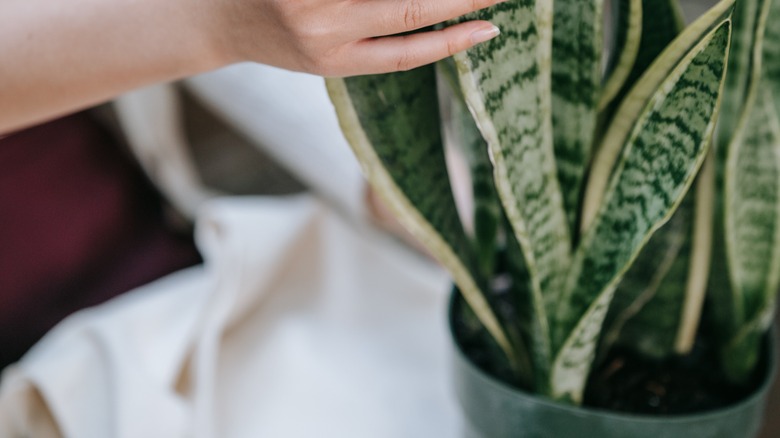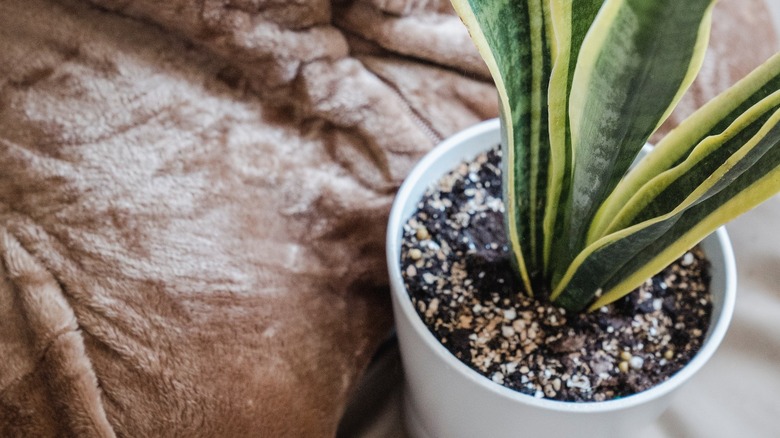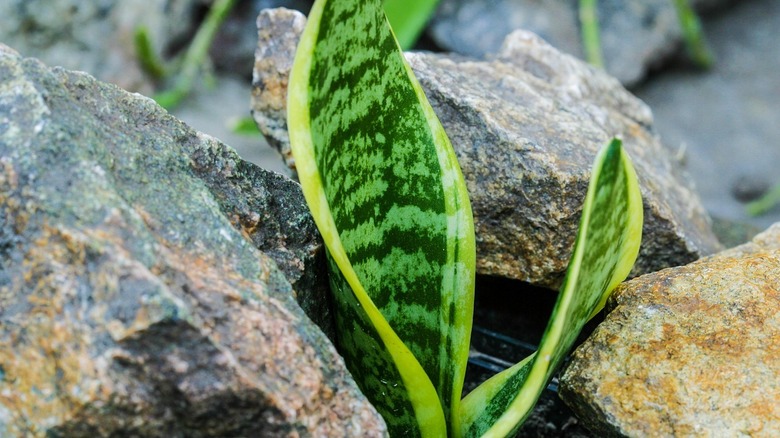Here's Why You Should Grow A Snake Plant In Just Water And Not Soil
Falling into the hydroponic category, snake plants prove to be sturdy and capable of growing in various types of terrain. In fact, you can grow them in just about any container of water. They not only take root but also thrive under such conditions which is why you should consider growing a snake plant in water as opposed to potting soil.
For one thing, you're saving money and possibly time by not purchasing potting soil. Plus, the plant can still gain nutrients from the combination of sunlight and water without having to place it in the soil. If you give the proper care, water would turn out to be the optimal, low-maintenance option for your snake plant's habitat compared to soil.
Also, if you opt for a clear container, which is the ideal choice, you can better gauge your plant's health by having an immediate view of both roots and leaves. So by keeping the snake plant in water, you won't have to deal with as much guesswork when caring for it.
Soil can become a hostile environment
Soil presents its own set of issues that can affect the health of the snake plant. When you try to establish a snake plant in any type of soil, you still have to deal with a number of variables, from drainage to the frequency of watering. For instance, you might end up dealing with bleached soil even if your plant resides indoors, especially with frequent watering or if you have hard tap water.
Moreover, potting soil has a finite amount of nutrients, so aside from following a strict watering routine, you also have to add fertilizer. In some cases, you might have to replenish or replace the potting soil while taking extra care with how you handle the plant and its roots.
In addition to the time-consuming regimen, soil poses a risk for disease, fungus, and of course, fungus gnats. That's largely due to the difficulty in striking a delicate balance between adequate watering and over watering along with the environment that it creates in the soil itself.
Moreover, if you're considering opting for organic potting soil with the intention of creating the best growing environment possible, think again. This type heightens the chances for bugs to make themselves at home and ailments to develop. Therefore, you might forgo the soil altogether for a healthier snake plant.
Water involves less work
When propagating a snake plant in water, however, you have fewer worries and more benefits when it comes to how much effort is required for proper care. Because you don't have to do a soil check multiple times per week (if not daily), growing the plant in water is much easier than the usual route. Plus, you won't have the concern of leaves drying out since the plant is surrounded by moisture. While sitting in water, the roots gain plenty of water, and the leaves have adequate exposure to moisture due to evaporation.
At the same time, you still need to give some attention to the amount of sunlight exposure, water level, and the type of container. Nonetheless, if you gently but completely clean the roots off before placing them in fresh, cool water (or room temperature water), the care regimen is still easier as long as the container is tall enough to support the growing leaves.
Another tip is to add some pebbles or marbles to the bottom of the container to help anchor the plants in place if they become rather top-heavy. Plus, this adds more aesthetic appeal. That's an added benefit of growing a snake plant in water: the visual pop.


